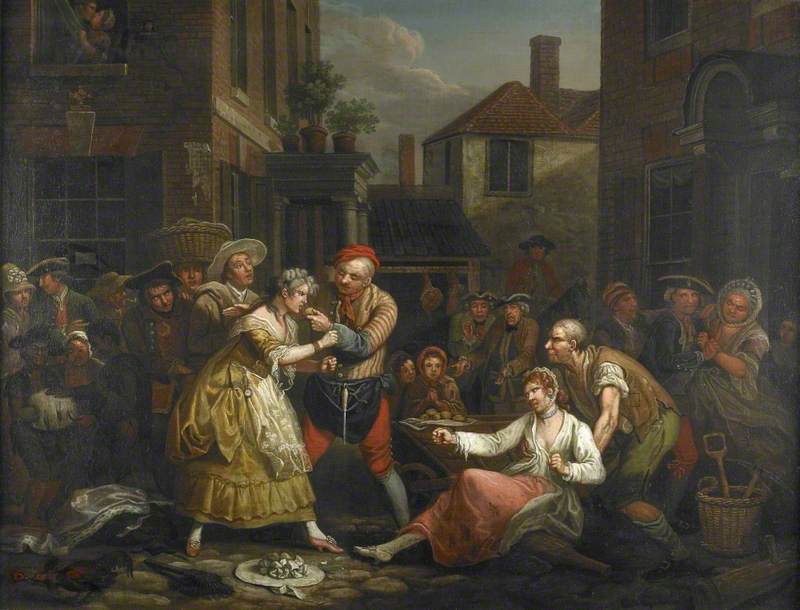
Image via Wikimedia Commons
Is breakfast really the most important meal of the day?
It certainly seems so from all the carefully staged photos of overnight oatmeal on Instagram.
The physical and mental benefits are well documented. A nutritious meal in the morning boosts blood glucose levels, improving concentration, boosting energy levels and maintaining healthy weight.
Sadly, many Americans gobble their breakfasts on the fly. How many hundreds of film and television scenes have you seen wherein the main characters hurtle through the kitchen snatching bananas, granola bars, and travel mugs on their way to the door?
The late gonzo journalist Hunter S. Thompson would surely not have approved, though he may have enjoyed the sense of superiority these morning scrambles would have engendered.
This was a man who bragged that he could “cover a hopelessly scrambled presidential campaign better than any six-man team of career political journalists on The New York Times or The Washington Post and still eat a three-hour breakfast in the sun every morning.”
Reporting for Rolling Stone in “Fear and Loathing on the Campaign Trail 76,” he intimated that he viewed breakfast with the “traditionalized reverence that most people associate with Lunch and Dinner.”
One wonders who exactly he meant by “most people”?
Regardless of whether he had been to bed, or what he had gotten up to the night before, he insisted upon a massive repast—consumed al fresco, and preferably in the nude. The sun he enjoyed basking in was usually at its zenith by the time he sat down. The meal, which he called the “psychic anchor” of “a terminally jangled lifestyle, consisted of the following:
Four bloody Marys
Two grapefruits
A pot of coffee
Rangoon crêpes
A half-pound of either sausage, bacon, or corned beef-hash with diced chilies
A Spanish omelette or eggs Benedict
A quart of milk
A chopped lemon for random seasoning
Something like a slice of Key lime pie
Two margaritas
And six lines of the best cocaine for dessert
Last summer, a Danish Vice reporter recreated Thompson’s breakfast of choice, inviting a poet friend (and “aspiring alcoholic”) to partake along with him. It ended with him vomiting, naked, into a shrub. His guest, who seems to be made of sturdier stuff, praised the eggs benedict, the Bloody Marys, and dessert.
Thompson preferred that his first meal of the day be consumed solo, in order to get a jump on the day’s work. In addition to the edible menu items, he required:
Two or three newspapers
All mail and messages
A telephone
A notebook for planning the next twenty four hours
And at least one source of good music
Read “Fear and Loathing on the Campaign Trail 1976” here. The key breakfast quote reads as follows:
I like to eat breakfast alone, and almost never before noon; anybody with a terminally jangled lifestyle needs at least one psychic anchor every twenty four hours, and mine is breakfast. In Hong Kong, Dallas, or at home—and regardless of whether or not I have been to bed—breakfast is a personal ritual that can only be properly observed alone, and in a spirit of genuine excess. The food factor should always be massive: Four bloody Marys, two grapefruits, a pot of coffee, Rangoon crêpes, a half-pound of either sausage, bacon, or corned beef-hash with diced chilies, a Spanish omelette or eggs Benedict, a quart of milk, a chopped lemon for random seasoning, and something like a slice of Key lime pie, two margaritas, and six lines of the best cocaine for dessert… Right, and there should also be two or three newspapers, all mail and messages, a telephone, a notebook for planning the next twenty four hours, and at least one source of good music… All of which should be dealt with outside, in the warmth of the hot sun, and preferably stone naked.
And just in case, here is a recipe for Crab Rangoon Crepes…
Related Content:
Hear the 10 Best Albums of the 1960s as Selected by Hunter S. Thompson
Read 11 Free Articles by Hunter S. Thompson That Span His Gonzo Journalist Career (1965–2005)
Ayun Halliday is an author, illustrator, theater maker and Chief Primatologist of the East Village Inky zine. Follow her @AyunHalliday.





